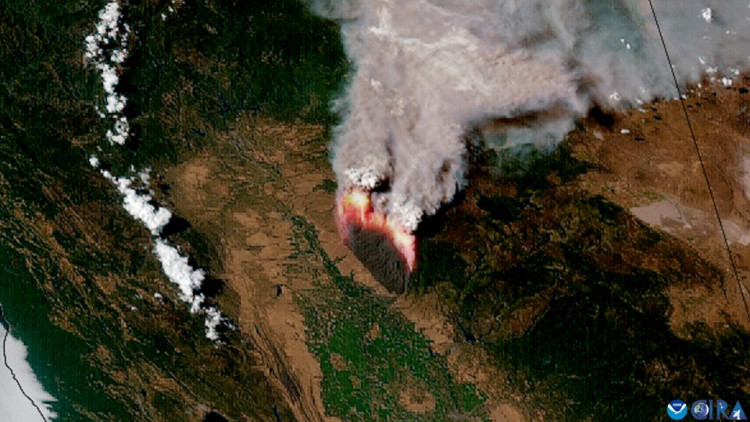Northern California's Park Fire has quickly become the state's most devastating wildfire of the year, scorching over 562 square miles-an area larger than Los Angeles. The fire, which started on July 24, has forced thousands to evacuate and caused widespread destruction across multiple counties, including Butte, Plumas, Shasta, and Tehama. The blaze, allegedly started by arson, has consumed forests that have not burned for decades, exacerbated by extreme heat and dry conditions linked to climate change.
The fire has wreaked havoc, darkening skies with smoke and prompting air quality alerts across the northwestern US and western Canada. More than 4,000 firefighters are battling the blaze, with reinforcements continually being called in. Despite their efforts, the fire remains only 12% contained as of Monday morning, and the situation remains dire.
"We are seeing increased fire activity within the incident this afternoon," said Mark Brunton, operations section chief at the California Department of Forestry and Fire Protection, during a Sunday news conference. The fire's rapid spread and intensity have led to the formation of pyrocumulus clouds, indicating extreme wildfire behavior and complicating firefighting efforts.
The fire's origin traces back to a man accused of setting a burning car into a gully in Chico, who was arrested and is due in court. The incident has highlighted the severe consequences of human actions, further intensified by climate change. Neil Lareau, a wildfire researcher at the University of Nevada, Reno, emphasized the fire's extraordinary growth and broad front, with the fire's edge stretching 35 miles at times.
"This fire has spread in ways that set it apart from other large events," Lareau noted. "The extreme growth and the really broad fire front both stand out." He cited the combination of heat waves, dried vegetation, and a mix of grasses and timber as factors that have allowed the fire to expand so rapidly. Rotating columns of fire and smoke, leading to fire tornadoes, have been observed, making it more difficult for firefighters to attack the blaze.
The Park Fire has not only destroyed structures but also threatens significant landmarks. Lassen Volcanic National Park has been evacuated, with the fire posing a risk to Manzanita Lake and the Mineral headquarters. The National Park Service has warned of the potential for the fire to reach these areas, prompting swift evacuations.
As communities grapple with the immediate impacts, the broader implications of the fire are becoming evident. Climate change has increased the frequency and intensity of heat waves, leading to more extreme wildfire weather conditions. These trends are particularly pronounced in the western US, where dry conditions and strong winds have created a tinderbox environment.
Despite cooler temperatures expected in the middle of the week, meteorologists caution that existing fires will not simply disappear. The longer-range forecast predicts hotter-than-average weather to return by early August, persisting into the middle of the month, which could exacerbate the situation further.
The Park Fire is part of a broader pattern of wildfires currently ravaging the western US and Canada. In Oregon, the Durkee Fire has scorched more than 288,000 acres, while fires in Washington, Idaho, Montana, Utah, Colorado, and Wyoming have prompted similar evacuation orders and air quality alerts.
The human toll of these fires is significant, with millions placed under air quality alerts and thousands forced to flee their homes. In the Canadian town of Jasper, Alberta, a fast-moving blaze caused substantial damage, underscoring the widespread impact of these fires.






